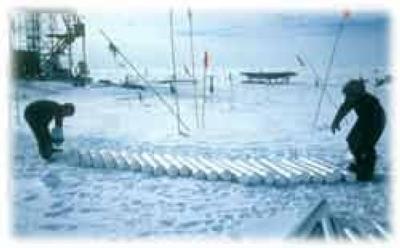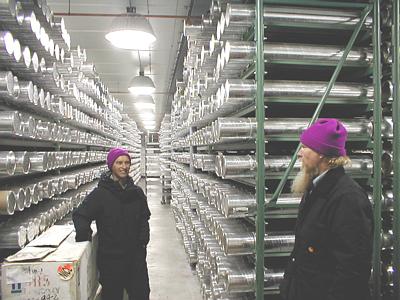11 December, 2000
Ice Cores
What could you possibly learn from a piece of ice taken from deep within
an Antarctic ice sheet? Actually, these samples of glacial ice, called
ice cores, provide scientists with the best information available about
the Earthís past climate.
The continentís interior receives only a few centimeters of snow each
year. Because it doesnít melt, the snow accumulates year after year,
eventually turning into glacial ice. The current ice sheets, which are
thousands of meters thick, consist of ice that has built up over
hundreds of thousands of years.
The ice retains chemicals, dust, and tiny air bubbles from the
atmosphere long ago. By analyzing these clues we gain information about
past climates, climate changes, and the causes of those changes. This
will allow us to better understand the impact that human activities may
have on climate
The ice core obtained at Siple Dome between 1997 and 1999 is just one of
many from Antarctica, Greenland, and other locations that are
contributing to our understanding of the Earthís climate system.

The ice core drill rig at Siple Dome. (image credit: G. Lamorey)

Preparing ice cores for transport. (image credit: USGS)

Unpacking a core from Siple Dome at the National Ice Core Laboratory in Denver. (image credit: NICL)

The storage facility at the National Ice Core Laboratory holds 85 cores from Antarctica, Greenland, as well as other locations.
Contact the TEA in the field at
.
If you cannot connect through your browser, copy the
TEA's e-mail address in the "To:" line of
your favorite e-mail package.
|
